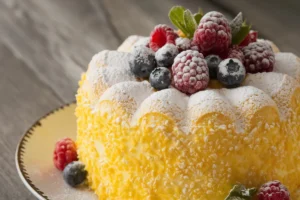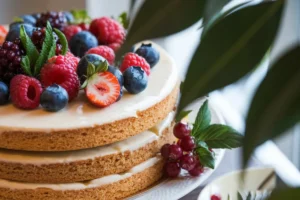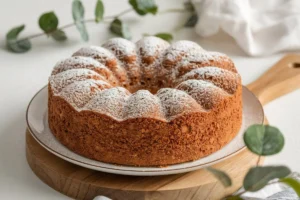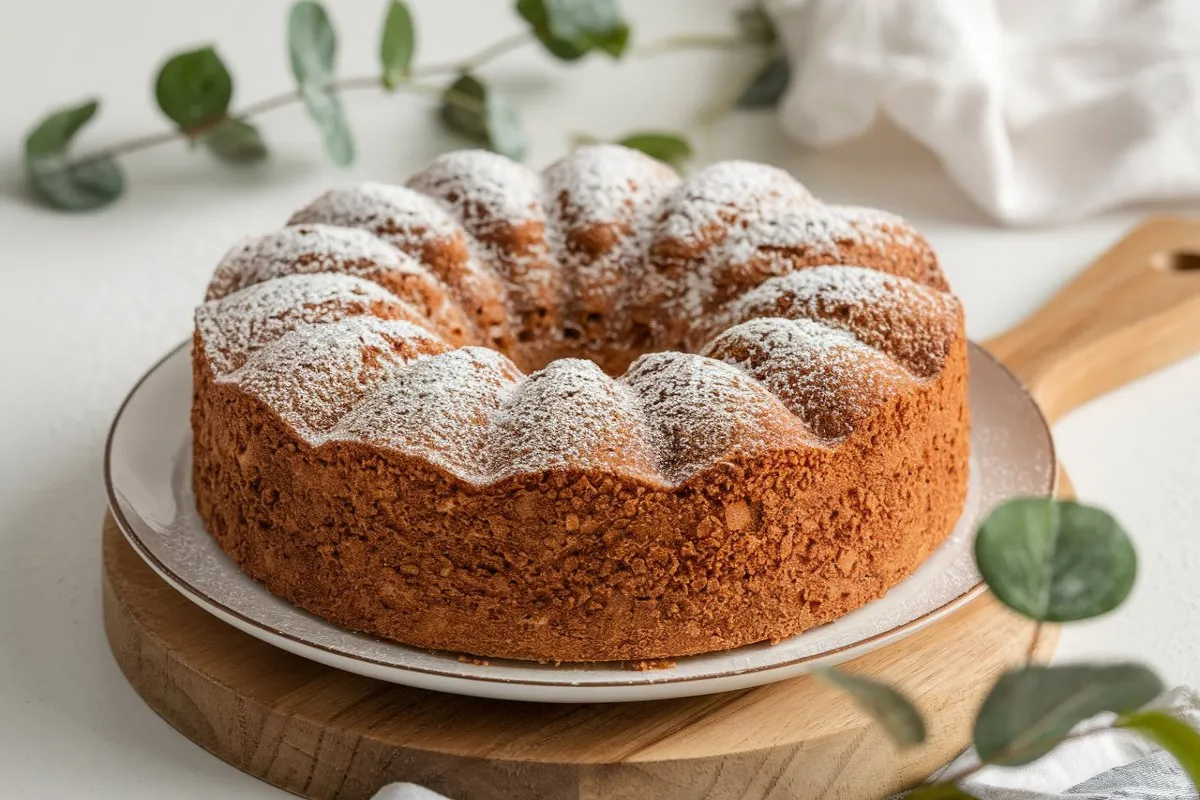Introduction
When learning French, one of the most delightful aspects is discovering the rich vocabulary associated with food, particularly desserts. Among these, gâteau stands out as a quintessential word that any French language enthusiast or food lover should know. More than just a term for “cake,” gâteau carries with it a deep cultural significance and a connection to the art of French baking. Understanding this word offers a glimpse into the heart of French cuisine, where cakes are not merely desserts but symbols of celebration, tradition, and culinary expertise.
In this article, we will explore the meaning of gâteau, its various forms, and its importance in French culture. Whether you’re a beginner in French or a seasoned learner, gaining insight into the word gâteau will enrich your understanding of the language and deepen your appreciation for the joys of French food.
Understanding the Word Gâteau
The French word for cake is gâteau (pronounced “gah-toh”). This term is a masculine noun, meaning it pairs with masculine articles and adjectives in French sentences. However, gâteau isn’t just a simple translation of “cake”; it represents a broader concept in French cuisine, encompassing a wide variety of baked goods that are central to French culinary traditions.
What Gâteau Means in French Cuisine
In French, the word gâteau can refer to everything from a simple homemade cake to an elaborate, multi-layered creation. For example, a gâteau au yaourt (yogurt cake) is a popular and straightforward dessert often made in French households. On the other end of the spectrum, you have the Gâteau Opéra, a luxurious cake composed of layers of almond sponge cake soaked in coffee syrup, filled with ganache and coffee buttercream, and topped with a chocolate glaze.
This versatility makes gâteau an essential word in French culinary vocabulary, as it covers a range of desserts that vary in complexity and flavor. Understanding gâteau as more than just “cake” helps to appreciate the rich diversity of French baking.
The Importance of Gender in French Nouns
Since gâteau is a masculine noun, it’s crucial to use the correct articles and adjective forms when incorporating it into sentences. For example:
- Le gâteau est délicieux. (The cake is delicious.)
- Un gâteau au chocolat (A chocolate cake)
These examples highlight how the gender of the noun influences the structure of the sentence, which is an essential aspect of mastering French.
Gâteau plays a significant role not only in language but also in French culture, symbolizing celebration, tradition, and the art of baking.
Common Types of Cakes in France

In France, gâteau isn’t just another word in the dictionary; it’s deeply embedded in the country’s culinary traditions. Here are some of the most beloved types of gâteaux:
- Gâteau au chocolat (Chocolate Cake): A rich, moist cake made with high-quality French chocolate. Many French households consider it a staple.
- Gâteau Breton (Breton Cake): A dense, buttery cake from Brittany, often flavored with rum or filled with prune.
- Tarte Tatin (Caramelized Apple Tart): Although technically a tart, this upside-down caramelized apple dessert often falls under gâteaux due to its cake-like qualities.
Each of these gâteaux offers a unique taste experience, reflecting the regional diversity and creativity of French baking. The next time you enjoy one of these desserts, consider their integral role in French culture. To understand where gâteau fits within French desserts, explore this Guide to French Pastries for a detailed overview.
The Cultural Significance of Gâteau in France
Gâteau holds significant cultural value in France. Cakes are often central to special occasions such as birthdays, weddings, and religious celebrations. The most iconic is the gâteau d’anniversaire—the French equivalent of a birthday cake, usually a gâteau au chocolat or a gâteau aux fruits (fruit cake), adorned with candles and shared with loved ones.
In the past, families reserved the preparation and consumption of gâteaux for festive events. These cakes symbolized joy, abundance, and community. Today, they are more commonplace, yet they retain their cultural significance. Families often pass down recipes through generations, each adding a unique twist to traditional formulas.
Moreover, gâteau features in many French idioms, such as “avoir son gâteau et le manger” (to have one’s cake and eat it too), highlighting its deep cultural roots in French society.
Differences Between Gâteau and Other French Desserts

While gâteau is a general term for cake, it’s important to distinguish it from other similar French words like tarte and pâtisserie. Each term has a specific use and meaning:
- Tarte: Refers to a dessert with a crust and filling, typically fruit or custard-based, such as tarte aux pommes (apple tart).
- Pâtisserie: A broader term encompassing all pastries, including cakes, tarts, éclairs, and other baked goods typically found in a French bakery.
Understanding these distinctions is crucial for anyone keen on French cuisine. A gâteau is often richer and more substantial than a tarte, which tends to be lighter and focuses on the filling.
How to Use the Word Gâteau in Sentences
To use gâteau correctly in French, you must pair it with masculine articles (le, un) and matching adjectives. Here are some examples:
- Le gâteau que j’ai préparé est délicieux.
(The cake I made is delicious.) - Un petit gâteau pour le dessert serait parfait.
(A small cake for dessert would be perfect.) - Je préfère le gâteau au chocolat plutôt que le gâteau aux fruits.
(I prefer chocolate cake to fruit cake.)
These examples demonstrate how gâteau fits into everyday conversations, whether discussing a specific type of cake or your preferences.
Variations of the Word Gâteau
The word gâteau can adapt to describe various types of baked goods, depending on the context. Here are some common variations:
- Le Cake: This term, borrowed from English, specifically refers to a loaf cake in French. Typically denser than a traditional gâteau, le cake often resembles what English speakers know as a pound cake or fruitcake. It is usually baked in a rectangular mold and might include ingredients like dried fruits, nuts, or even chocolate chips.
- Gâteau sec: Literally translating to “dry cake,” this term is used in French to describe what we might consider a biscuit or cookie. These gâteaux secs are typically crisp and can be stored for extended periods, making them perfect for enjoying with tea or coffee.
These variations highlight the flexibility of the word gâteau in French culinary language. Whether it refers to a dense loaf cake, a delicate biscuit, or the more traditional layered cake, gâteau covers a broad range of baked goods that are integral to French cuisine.
FAQs: Common Questions About the French Word for Cake
What is the French word for birthday cake?
The French term for birthday cake is gâteau d’anniversaire. This cake is typically more elaborate than a regular gâteau, often decorated with icing, fruit, or other adornments for the occasion.
Is Gâteau used for all types of cakes?
Not all cakes in French are referred to as gâteau. For example, small cakes like cupcakes are sometimes called petit gâteau or simply cupcake (using the English term). Additionally, more specific cakes like cheesecake may retain their English name or be described using more precise terminology.
How do you say “cupcake” in French?
In French, a cupcake is often referred to as a petit gâteau or simply cupcake, especially in modern usage where English terms have been adopted into French culinary vocabulary.
How do you pronounce gâteau?
The pronunciation of gâteau is “gah-toh.” The word is often mispronounced by non-native speakers, so mastering its correct pronunciation is important, especially if you want to be understood when speaking French.
Related Words and Phrases
As you explore the word gâteau, you’ll naturally encounter other related French culinary terms that are equally essential:
- Pâtisserie: Refers to a pastry shop or the broader category of pastries. A pâtisserie is where you’ll find a wide array of delightful baked goods, from delicate éclairs to intricate tarts.
- Confiserie: This term denotes a confectionery, a place where sweets and candies are made and sold. Confiserie highlights the French tradition of creating fine sugary treats, such as bonbons and nougat.
- Viennoiserie: Describes a category of French baked goods made from leavened dough, often enjoyed at breakfast. Popular examples include croissants and pain au chocolat. These items, known for their buttery, flaky texture, are a staple in French morning routines.
Understanding these terms deepens your appreciation of French cuisine. Each plays a significant role in the culinary landscape and is indispensable for anyone passionate about French food and culture.

Conclusion
In summary, the French word for cake, gâteau, opens the door to the rich culinary traditions of France. Whether you’re talking about a simple homemade gâteau au yaourt or an elaborate gâteau d’anniversaire, understanding this term and its variations is essential for anyone interested in French cuisine.
By familiarizing yourself with gâteau and other related terms, you’ll not only enhance your vocabulary but also deepen your appreciation for the art of French baking. The next time you visit a French bakery or prepare a French dessert at home, remember the cultural significance behind this seemingly simple word, and enjoy the delicious world of gâteaux.

